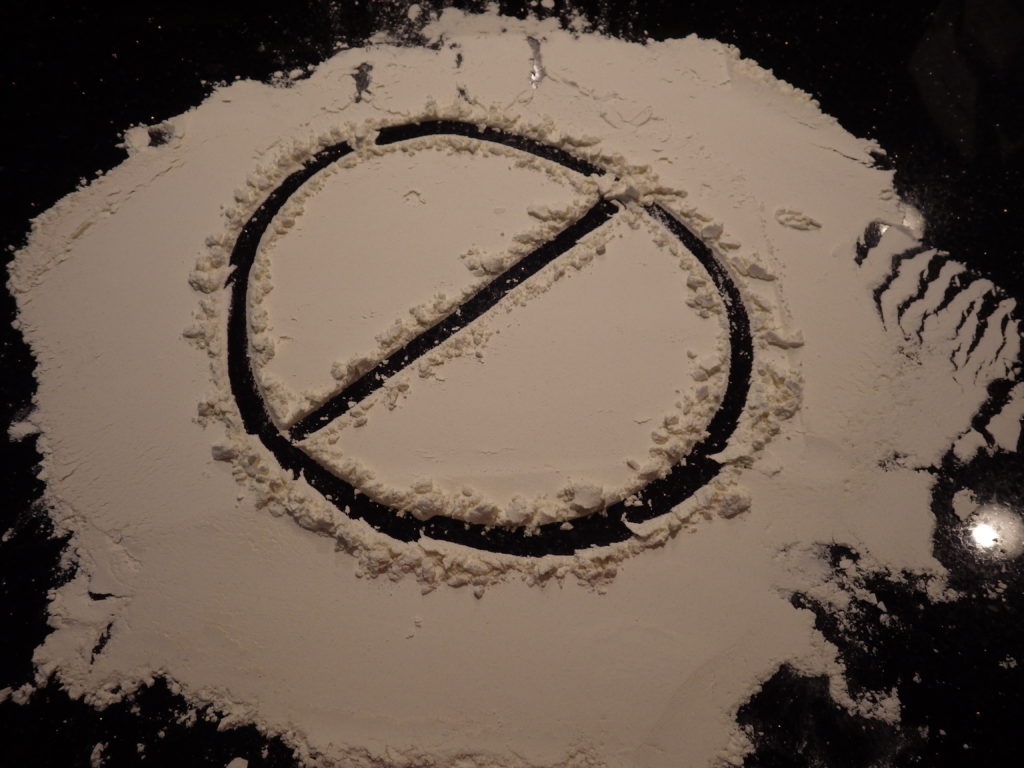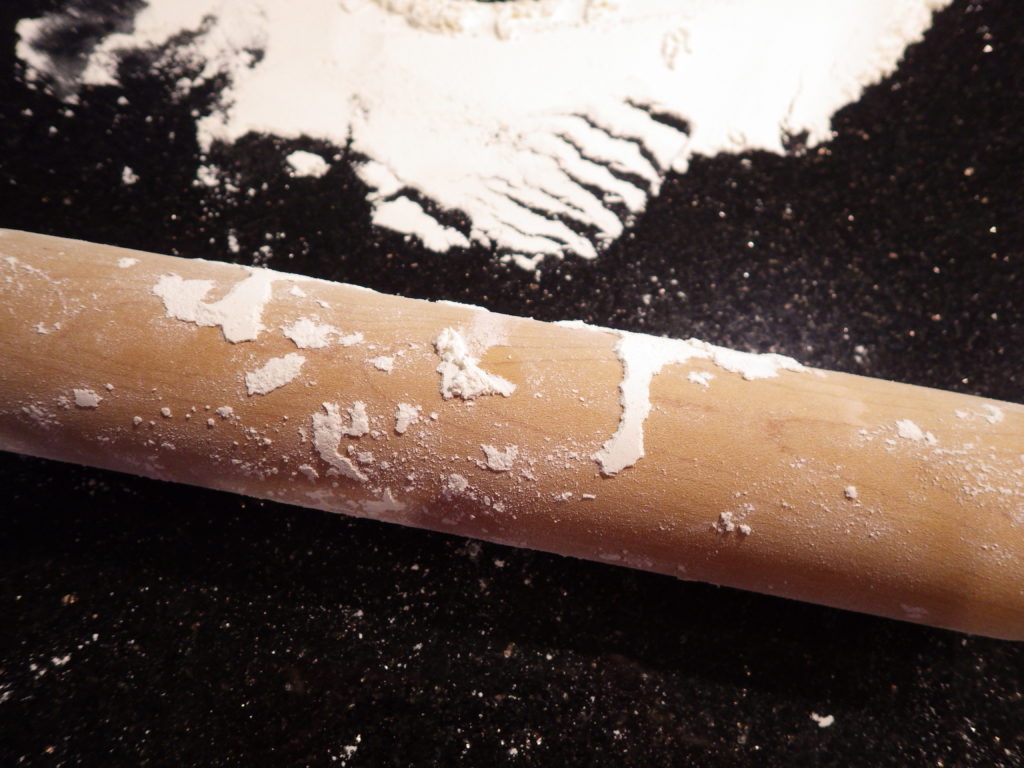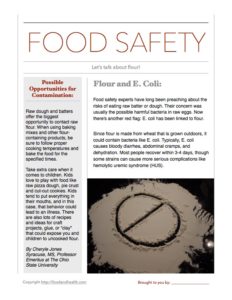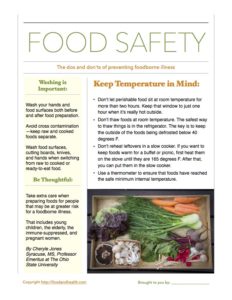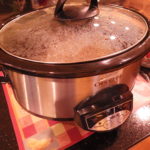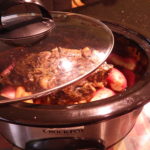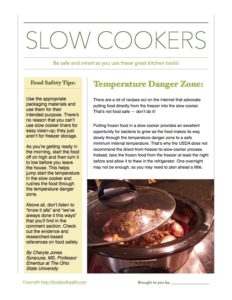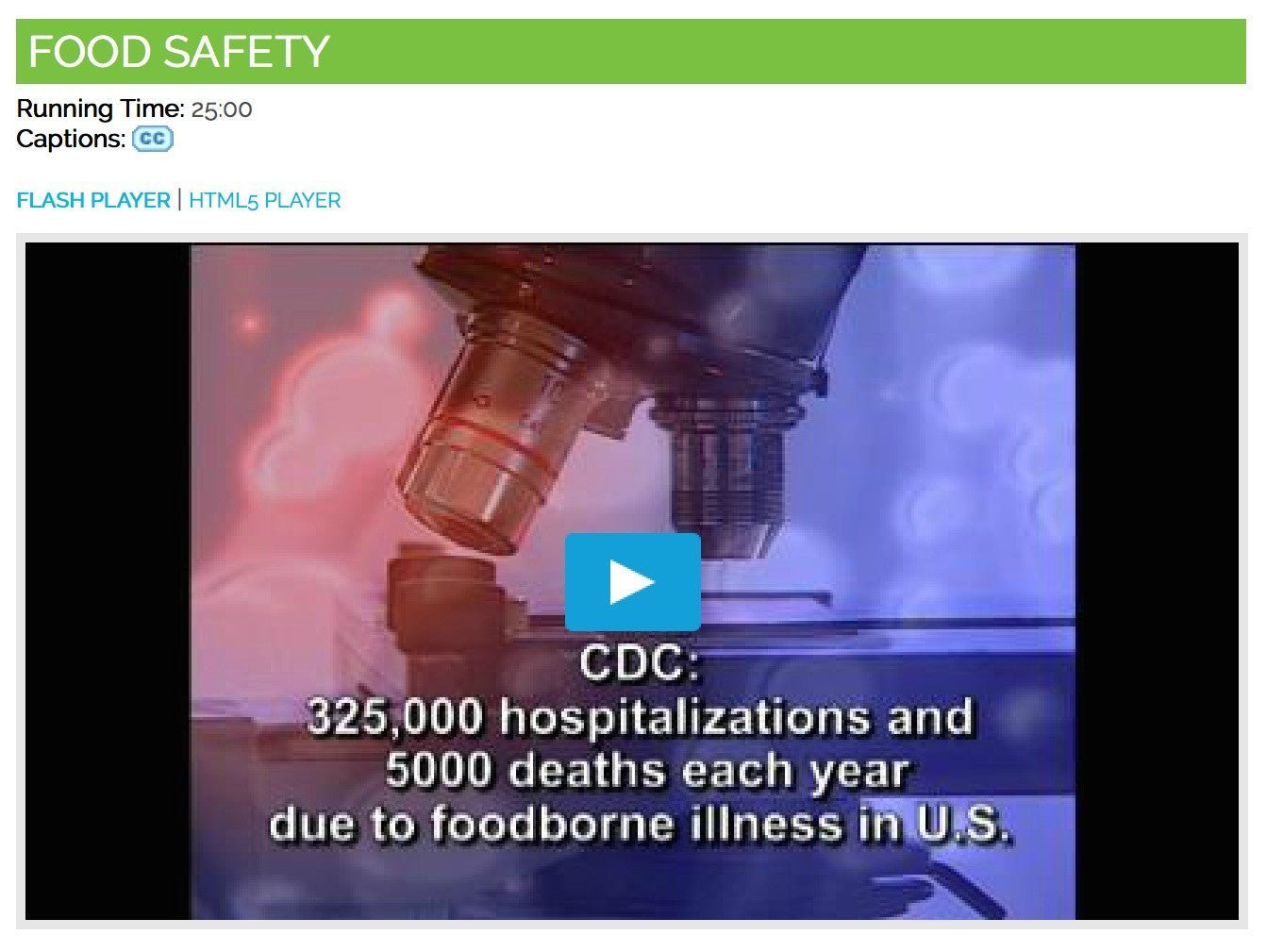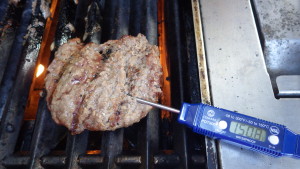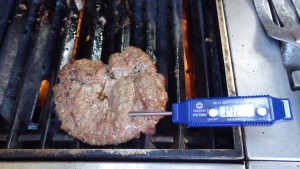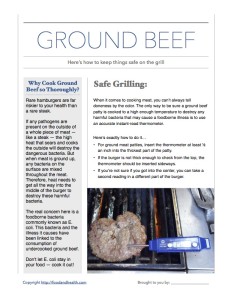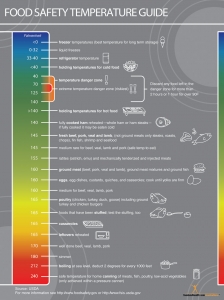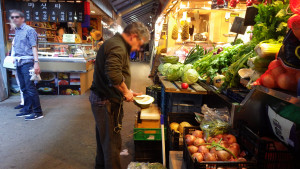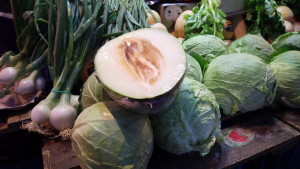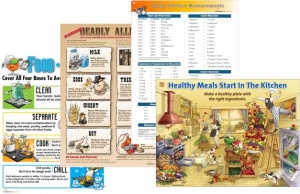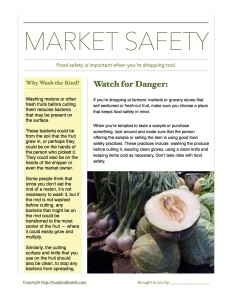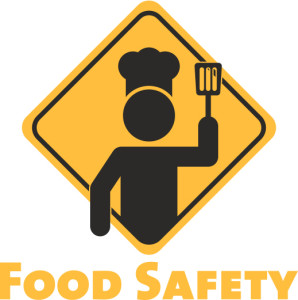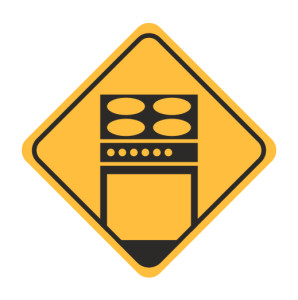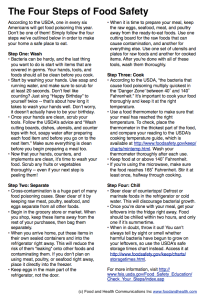We see all the signs saying “unread is better than dead” about texting and driving. But what about texting and cooking? I have gotten into the habit of setting a timer for everything I cook or bake because it is too easy to get distracted and burn something. Focus is the key during every step in the kitchen and especially during unattended cooking time.
Want to heat a pot of water for pasta? Set the timer for 4-5 minutes. Want to cook pasta? Set the heat on the stove to low and cook 8 minutes. Most items that are baked in the oven need 20 minutes.
And when an item is done cooking, turn the oven or stove off right away (unless you work in foodservice and need to leave it on).
Here are more kitchen safety tips:
Avoid falls:
- Keep the floors clean and unobstructed. Mop up spills and sweep up any debris that falls on the floor right away.
- Mats and rugs should not slip.
- Sturdy stools and step ladders should be used to reach high shelves.
- Boxes and other items should not be on the floor or obstruct walkways.
- Make sure you can see your feet if you are carrying something.
- Get someone to help you lift a heavy load.
- Spray all oils over the sink or counter, not over the floor!
Avoid burns:
- Always use dry heavy mitts, silicon mitts, or padded oven mitts for carrying any hot pan.
- Set anything hot on a proper surface and then cover it with the mitts or towels and alert anyone you are working with so they don’t pick up something hot.
- Set the timer for anything you cook or bake.
- Always turn the stove or oven off when done before you do anything else. Make this a habit.
- Get help with any hot pot or pan that is remotely too heavy or big to carry.
- Be very careful whenever you are using large amounts of fat or water. Splashes are dangerous. Focus on what you are doing instead of engaging in conversation or worrying about what others are doing if you are cooking around hot fat or water.
- Don’t let pans hang off the edge of the table and keep pot handles turned in.
- Know how to put out a fire and keep a fire extinguisher handy.
Avoid cuts:
- Always use the safety devices on equipment and keep equipment up to date so safety guards are in working order.
- Learn to use knives and always focus on what you are doing.
- Make sure the cutting board is secure to the counter.
- If you are new to the kitchen wear cut-proof safety gloves.
- Use a sharp knife.
- Store your knives in a safe place so you don’t get cut reaching past them.
- Cut away from yourself. Don’t put anything in the knife’s path that you don’t want to cut.
Save your back:
- Get help carrying a heavy load or break it up into smaller loads.
- Stand on rubber mats if you work many hours on your feet. Good shoes are also important.
- Avoid fast turns and twisting movements when you are carrying heavy items.
- Lift with your legs, not your back. This is best accomplished by bending at the knees and then lifting.
Save your recipe!
- The biggest mistakes ever made in cooking or baking always involved changing a recipe. If you need to increase or decrease a recipe, do it on paper. If you double it in your head you will invariably forget to double an ingredient and your recipe will be a disaster. It is always good to double check your numbers.
- Measure everything first and then proceed with the instructions.



